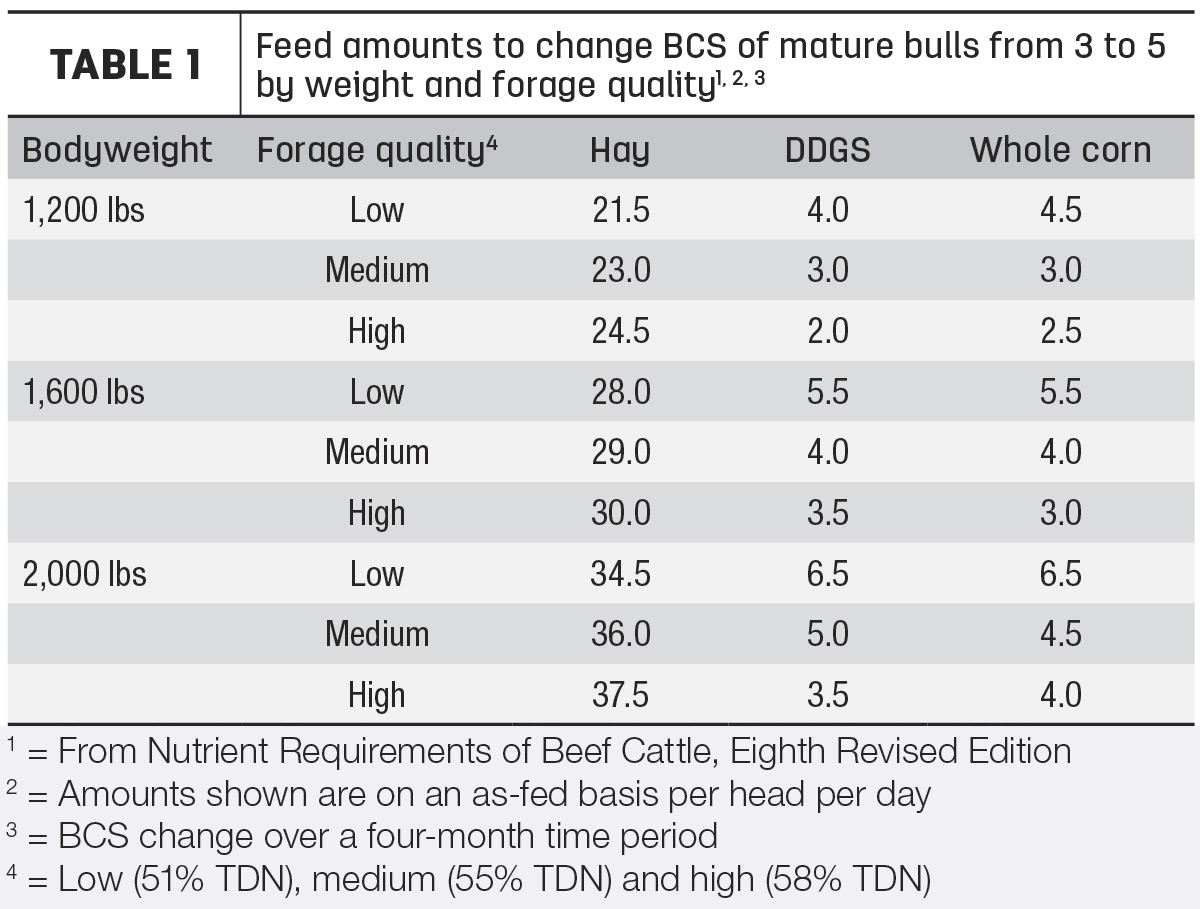For cow-calf producers who limit the length of the breeding season, the period of rest after removal from females is key for management of herd bulls. During this time, it is not uncommon for bulls to be observed less frequently. Attention to them often falls, albeit unintended, to the bottom of the priority list.
As with females, the time in between breeding seasons represents the opportunity to regain body condition and weight if needed, and this length of rest is certainly reduced when bulls are used in multiple breeding seasons. Body condition serves to provide cellular energy needed by muscle tissue during the breeding season and as insulation against cold temperatures during this time of the year. Dietary energy and protein deficiencies, particularly when extended and severe, can decrease spermatogenesis, and bulls that maintain weight during the offseason are more likely to pass a breeding soundness exam prior to the next season of use. On the other hand, data and observations suggest that semen quality and libido are negatively impacted by overconditioning both young and mature bulls, so with today’s feed costs, we should all be inclined to err on the side of avoiding overfeeding.
Physical activity for mating represents a substantial energetic cost, certainly more so in large, extensive pastures where animals travel farther distances, so it is typical for bulls to lose 150 to 200 pounds or more during breeding. Young bulls have a requirement for growth until they are 3 to 4 years of age and thus typically lose weight more rapidly than mature animals. Wouldn’t we all choose a thinner conditioned sire that has worked to breed more than his fair share of females over a fleshier, perhaps more eye-appealing bull that ultimately produces much fewer progenies? While our preference here would be for the first of the two, we should keep in mind that we don’t want bulls to lose condition to the extent that they lose muscle tissue because it is more challenging to regain and may also put them at a higher risk for injury. Supplementation of thin bulls after breeding is often needed and even more so when forage quality is low, which is typically the case during winter.
As with cows, estimated forage intake by bulls will be dependent on bodyweight and forage quality, and supplementation rates can be determined from nutrient requirements for a desired rate of gain or body condition score (BCS) increase. If bulls need to regain weight, energy intake must be beyond the requirements for maintenance in an amount sufficient for the change to occur in the desired length of time. Nutrient requirements for bulls are influenced by many factors but are largely driven by weight.
Amounts of common feedstuffs needed to increase BCS from 3 to 5 for mature bulls of different weights and varying forage qualities, as expressed as total digestible nutrients (TDN), are shown as examples in Table 1. The key takeaways here are that (1) expected forage intake increases as TDN and bodyweight increase, (2) the amount of supplemental protein and energy needed decreases as forage intake increases, and (3) additional supplementation beyond the amounts shown may be needed to offset increased maintenance energy requirements due to cold stress or if the feeding period is less than four months.

When managing young and mature bulls together, if they are not turned out on pasture, it is recommended they be maintained in a bigger pen or trap pasture large enough to avoid injury and maintain soundness and athleticism. If providing supplement in a bunk, a minimum of 2 to 3 feet of linear space per bull is necessary to reduce competition. Testicular frostbite is always a concern this time of year, and sufficient bedding can greatly aid in reducing the incidence of this condition, certainly for bulls in drylots or areas with little ground cover.
As the next breeding season approaches, schedule breeding soundness exams well in advance so you have ample time to retest any bulls that fail an initial exam or find backup bulls in the event they are not recommended for breeding.









